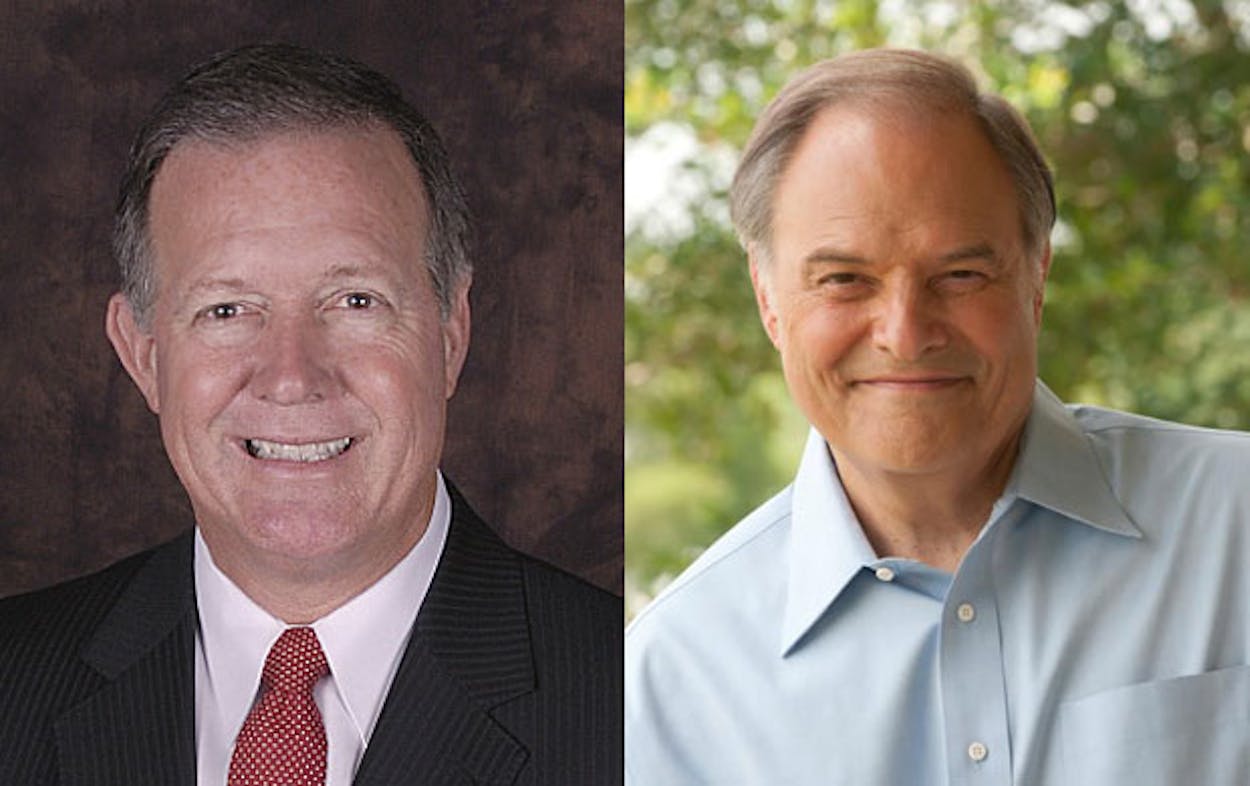The outcomes of the bulk of the congressional races in Texas this election cycle seem fairly predictable, thanks to state legislators who drew the lines of districts on the state’s new maps to favor incumbents. In this climate, the race to fill retiring U.S. Rep. Ron Paul’s seat in Congressional District 14 has emerged as one of the most interesting races in Texas.*
Veteran five-term Democratic congressman Nick Lampson is facing off against Republican State Representative Randy Weber in this conservative-leaning district, which, under the 2012 maps, stretches along the Texas coast from Beaumont in the east past Lake Jackson in the west. Governor Rick Perry won 55.9 percent of the area’s vote in the 2010 gubernatorial race and John McCain swept up 57 percent in 2008 presidential election, Ross Ramsey notes in his story on the race in the Texas Tribune.
But, “Lampson has run in this area before, on different political maps, at different times, but on political ground that closely matches the current district. He’s a known quantity, he argues,” Ramsey writes.
An AP story by Martiga Lohn describes the strategy Lampson and other “vintage” politicians are deploying this election cycle:
In an election shadowed by public disdain for government, these vintage politicians are running as both insiders and outsiders – hybrids with enough distance from Washington to decry gridlock, but with the promise of getting things done because they know how the place works.
While Weber won an endorsement from Paul, Lampson is selling himself as someone with experience reaching across the aisle. “It’s going to take someone who has proven to make an effort at changing the way Congress functions to pull us together again,” Lampson told Lohn. He pushes that message in his first TV spot. “There seems to be a lot of whining and crying in Congress today. We can get so much more done when we work together,” he says.
And given the political leanings of Congressional District 14, Lampson has not been shouting his party affiliation from the rooftops: “Lampson’s television and printed materials are green — not red or blue, the charged colors of political partisans — and they don’t mention the fact that he’s a Democrat in any prominent way,” Ramsey writes.
While Lampson touts his record of bipartisan cooperation, Tea Party-backed Weber is positioning himself as a staunch conservative and framing this race in terms of national issues. He slams Lampson’s association with prominent Democrats including House Minority Leader Nancy Pelosi and associating himself closely with the Romney/Ryan ticket.
“The voters of Congressional District 14 … can choose the Obama/Pelosi/Lampson liberal path which has brought us ObamaCare, $16 trillion in debt and kept unemployment over 8%; or the Romney/Ryan/Weber conservative vision to lower taxes, cut spending and debt and get Americans working again,” Weber said in a statement on his website.
And a TV spot titled “Built it” slams Obama and cites Weber’s background as a small business owner and a job creator.
In July, Weber told the Houston Chronicle that he is not seeking out centrists and independents. “We don’t knock on a lot of moderate doors, because my message doesn’t really resonate,” he said. And Burnt Orange Report points out that Weber’s website boasts that he has been endorsed by polarizing Maricopa County Sheriff Joe Arpaio. (He has also won endorsements from Perry, Ag Commissioner Todd Staples, and Texas Attorney General Greg Abbott.)
CORRECTION: A previous version of this paragraph said that Ross Ramsey wrote that the race to fill Congressional District 14 was the sole example of a “real, true, honest-to-goodness competition” in Texas. Ramsey was referring to Congressional District 23. The race to fill CD-14 does not “fit the mold of ‘competitive,'” Ramsey wrote in an e-mail to the TM Daily Post. We regret the error.
- More About:
- Politics & Policy
- Ron Paul







